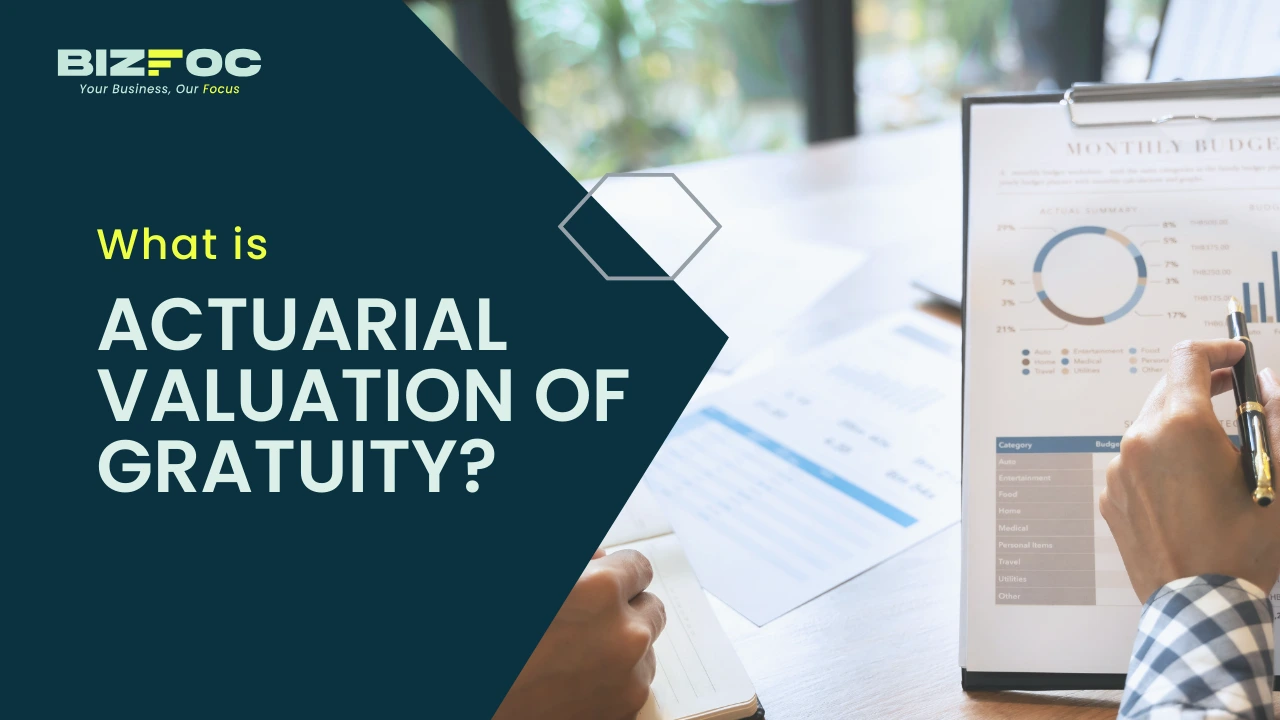Publishing Date: 23 Nov, 2024

In today’s constantly changing business world, companies need to take into account its future liabilities that would arise because of the services provided by its current employees. They need to evaluate the amount payable to its employees sometime in the future in the form of employee benefit schemes.
Some of these employee benefit schemes include:
This is where actuarial valuation of gratuity comes into picture. Its sole purpose is to estimate the present value of its expected future cash flows associated with these employee benefit plans. By evaluating these current and future liabilities, companies eliminate the risk of not being able to compensate their present employees as well as those who have retired.
In simple words, we can say that actuarial valuation includes evaluating how much amount to set aside today in order to compensate and fulfil their obligations towards the employees of the organisation in future.
To evaluate the actuarial valuation of gratuity report, we equate the assets enjoyed by the company that are brought in by the employees to the liabilities suffered by the company due to the employee benefit schemes. For the asset side, we take the contributions made by the employees towards the growth of the organization in the form of the current financial resources available. On the other hand, liabilities would include the payout made to the employees for their services rendered. By comparing these two, the company gets an idea about the current situation of their funds and whether or not it can cover future employee benefits. While estimating the assets and liabilities, actuary should consider the following:
The company, in general should know about its present funds and whether or not they are sufficient to cover present as well as future labilities. Hence, actuarial valuation of gratuity gives an idea about the monetary state of the company and thus, is necessary for any type of company, big or small. This is one of the major reasons for estimating future liabilities and working on the actuarial valuation.
Since employees in the organization need to be compensated for the hard work they put in, actuarial valuation of gratuity is required to avoid last minute hassle or to manage funds more wisely. The company needs to set aside the amount payable to employees to not land in a situation where it faces shortage of funds to pay their due employee benefit payments to retiring or present employees.
Another major reason for evaluating the actuarial valuation of gratuity report is the accounting standards set so as to ensure companies handle their finances in a better way. Under these accounting standards, actuaries are required to estimate their company’s future liability and make provisions for that beforehand. Hence, the balance sheet of the company would include provisions such as employee benefit schemes like pensions, sick or paid leaves, gratuity, etc. These are then included in the financial statements of the company and play a major role while estimating future obligations.
Comprehensive Income rather than P/L account.
In the OCI account, actuarial gains and losses are divided into 3 parts) Actuarial Gain or Loss due to Demographic Assumption
Additionally, under IND AS 19, discount rates are used to evaluate the expected return from the investment.
Apart from these two, US GAAP which stands for Generally Accepted Accounting Principles, are the accounting standards followed in the U.S. Also, IFRS is another accounting standard rule that stands for International Financial Reporting Standards.
Conclusion
To sum up, actuarial valuation is required to be done not only by being binded by the accounting standards but also by moral obligation of compensating the employees of the organization for the services rendered by them and managing the company’s funds to provide them employment benefit schemes
1) How is actuarial valuation of gratuity calculated?
Actuarial valuation of a gratuity calculated by using the formula -
Gratuity = (Last Drawn Salary × Tenure × Gratuity Rate) ÷ 26, adjusted to account for actuarial assumptions such as mortality, discount rate, and withdrawal rates.
2) How to audit Actuarial Valuation?
Verifying data accuracy, examining assumptions, recalculating samples, evaluating technique compliance, assuring legal conformity, testing sensitivity, enlisting actuaries, and recording findings to validate outcomes are all part of auditing actuarial valuation.
3) What is the significance of the discount rate in the valuation process?
The discount rate has a substantial influence on valuation results and aligns the computation with market interest rate developments by reflecting the time value of money and decreasing future gratuity liabilities to their present value.
4) What is the purpose of an actuarial valuation for gratuity?
Estimating an organization's gratuity liability through actuarial valuation serves the dual purposes of guaranteeing accurate financial reporting, adherence to accounting standards, and efficient provisioning for employee benefits.

e-Shram Card: Registration| Apply online| Download
25 Nov, 2024

7th Pay Commission Pay scales- Bizfoc
23 Nov, 2024

What Is Actuarial Valuation Of Gratuity?
23 Nov, 2024

8th Pay Commission | Fitment Factor Salary Hikes | Bizfoc
23 Nov, 2024

Top 12 Best Future Business Ideas That Will Boom in 2050
21 Nov, 2024
Share article via:
